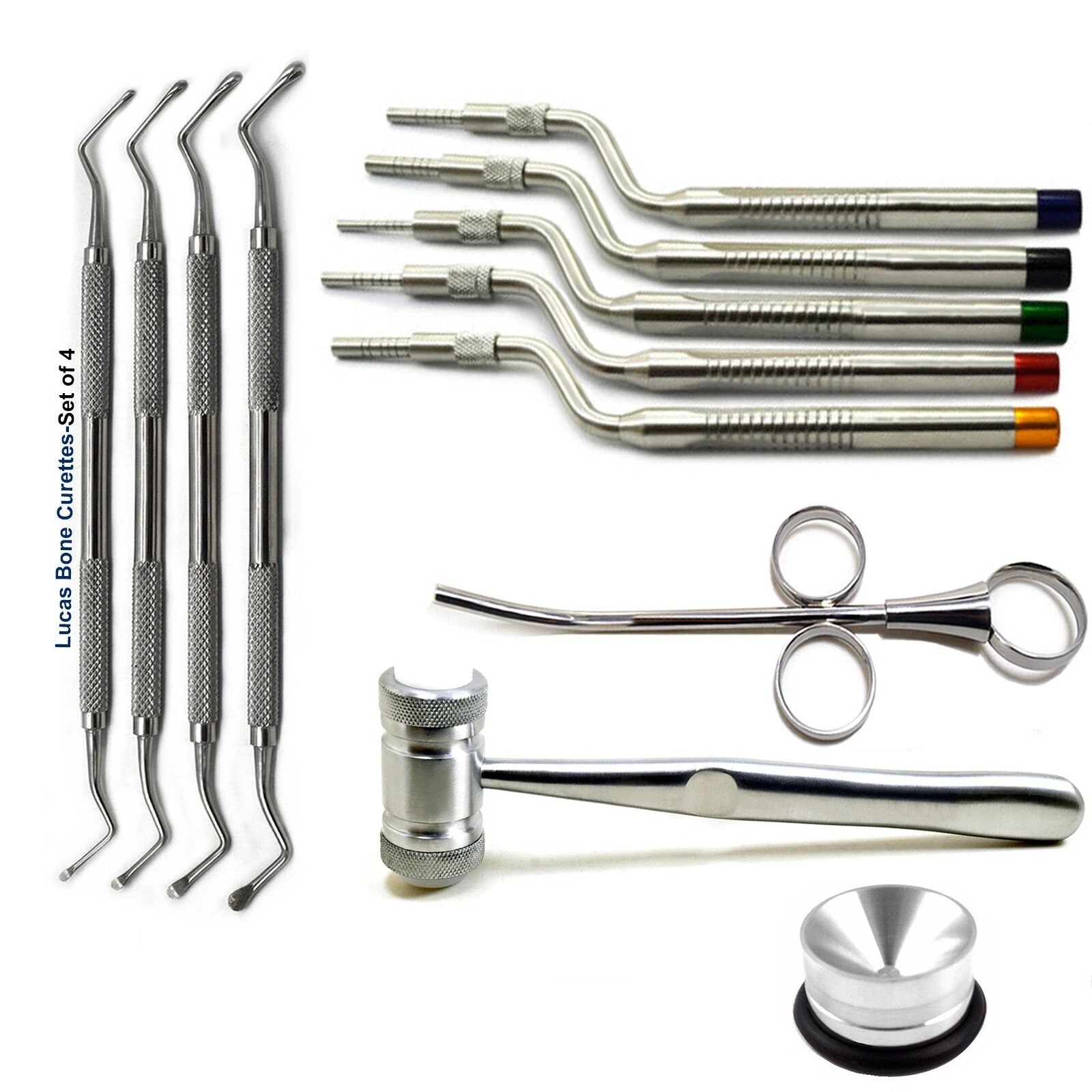Choosing the Best Dental Surgical Instruments for Your Practice
Selecting the right dental surgical instruments is a crucial step in ensuring clinical success and patient satisfaction. High-quality tools not only enhance procedural precision but also improve efficiency, safety, and ergonomics in the operating room.
Selecting the right dental surgical instruments is a crucial step in ensuring clinical success  and patient satisfaction. High-quality tools not only enhance procedural precision but also improve efficiency, safety, and ergonomics in the operating room. Whether you're building a new practice or upgrading your existing kit, choosing instruments that match your specialty, techniques, and workflow is essential.
and patient satisfaction. High-quality tools not only enhance procedural precision but also improve efficiency, safety, and ergonomics in the operating room. Whether you're building a new practice or upgrading your existing kit, choosing instruments that match your specialty, techniques, and workflow is essential.
In this guide, we’ll explore the key instruments every dental surgeon should consider, highlight cross-specialty tools such as eye instruments, and help you make informed choices that will benefit both your team and your patients.
Understanding the Role of Dental Surgical Instruments
Precision in Every Procedure
Dental surgical instruments form the backbone of surgical dentistry—from extractions and flap surgeries to bone grafting and implant placement. Selecting reliable tools such as retractors, scalpel handles, scissors, and forceps ensures that procedures are carried out with accuracy and control.
Key procedures include:
- Surgical tooth extractions
- Periodontal surgeries
- Implant placements
- Bone grafts and sinus lifts
Among the most essential tools are dental elevators. These instruments assist in loosening teeth prior to extraction, minimizing trauma to the surrounding bone and tissue.
Top Categories of Dental Surgical Instruments
Dental Elevators
Dental elevators are indispensable for surgical extractions. They work by severing the periodontal ligament and gently luxating the tooth. Their sharp edges and ergonomic handles reduce effort while enhancing control.
When selecting elevators, look for variations like straight, Cryer, and root tip types to handle different clinical scenarios effectively.
Composite Filling Instruments
Though primarily used in restorative dentistry, composite filling instruments offer value in surgery as well. Their slim and smooth profiles allow for delicate applications of graft materials or manipulation of membranes during surgical procedures.
These instruments are also useful when placing sealing or temporary materials in complex surgeries involving bone or sinus augmentation.
Sinus Lift Instruments
For implantologists, sinus lift instruments are critical. These tools are designed for lifting the Schneiderian membrane gently without perforation. The best sets include curved and angled tips, allowing access to the sinus floor while preserving soft tissue integrity.
Eye Instruments
The innovation and finesse seen in eye instruments often inspire improvements in dental tools. Ophthalmic tools are built for microsurgery, and their lightweight, sharp designs are ideal for delicate tissue manipulation. Many periodontal and microsurgical dental tools borrow these design principles to improve control and minimize tissue damage.
Eye Surgery Instruments
The crossover between dentistry and ophthalmology becomes clearer when exploring eye surgery instruments. Tools like micro-forceps and ultra-fine scissors are used in dental procedures where precision is non-negotiable—such as root-end surgeries or connective tissue grafts.
What to Look For in High-Quality Surgical Instruments
Material Durability
Choose instruments made from surgical-grade stainless steel or titanium. These materials resist corrosion, maintain edge sharpness, and withstand repeated sterilization cycles.
Ergonomic Design
Handles should offer a secure grip and reduce hand fatigue. Lightweight and balanced instruments help maintain control during long procedures.
Versatility and Specialization
While general-purpose tools are useful, investing in specialized instruments for implantology, endodontics, and periodontal surgery can elevate the quality of care you provide.
Building Your Instrument Set Based on Practice Needs
General Dentistry
For basic surgical tasks such as extractions and minor periodontal work, include:
- Elevators
- Forceps
- Scalpel handles
- Suturing kits
- Curettes
Implant Dentistry
Expand your kit to include:
- Sinus lift instruments
- Bone graft carriers
- Membrane applicators
- Surgical suction tips
Microsurgery and Periodontal Work
Use cross-specialty precision tools such as:
- Eye instruments
- Microsurgical scissors
- Mini blade handles
- Non-reflective mirrors
Where to Source the Best Instruments
A trusted supplier ensures product consistency, warranties, and support. Explore a full range of premium dental surgical instruments from a provider that understands both quality and performance expectations.
Maintenance Matters
To prolong the life of your surgical instruments:
- Clean immediately after use
- Sterilize according to standards
- Lubricate moving parts regularly
- Store instruments properly in trays or cassettes
Regular maintenance prevents rust, dull edges, and performance degradation—critical for tools like dental elevators and scissors where sharpness is key.
Conclusion
Choosing the best dental surgical instruments means understanding your procedural needs, investing in durable tools, and borrowing precision techniques from related fields. From composite filling instruments to eye surgery instruments, each piece of your surgical toolkit should support your mission to provide accurate, comfortable, and efficient patient care.
By incorporating specialty tools like sinus lift instruments and ergonomically-designed eye instruments, you're setting your practice up for clinical success across a range of surgical disciplines.
Ready to upgrade your surgical toolkit? Explore Meditek’s complete range of dental and surgical instruments to bring precision and performance to every procedure.